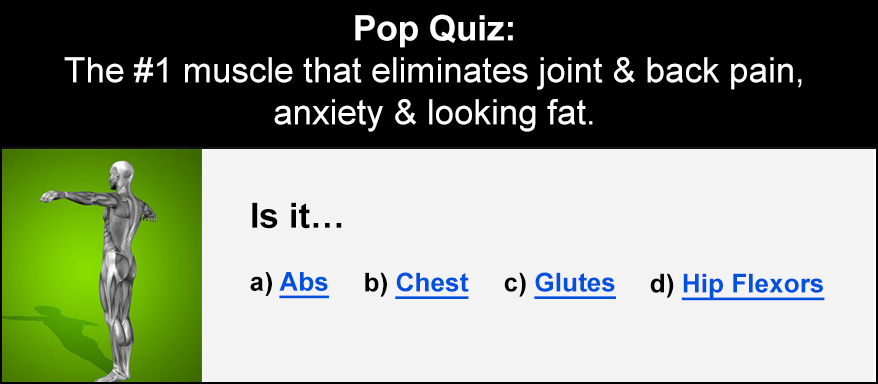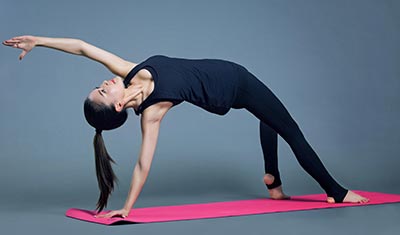
One of the things that people misunderstand is that mobility work doesn’t need to be super complicated. It doesn’t need to be handed down by a physiotherapist or a yoga instructor or a coach.
What matters is understanding your own issues, but also how to work on them. Today, our focus is all about taking your mobility into your own hands. We’re going to cover homebrew methods for putting together an effective mobility session for your own needs and limitations at home!
If you’ve been confused about mobility work and want to take total control of your own, then stick with us…
The Components of Effective Mobility Work
Effective mobility work, the kind that makes the most of your time and takes care of your body, is based on 3 simple principles. These are: end-ranges, control, and movement.
The point is that if you learn how to use these, you’re going to see significant improvements in the quality of time you put into mobility. Not only that, but your ability to design mobility routines for yourself, or adapt to the daily feelings of tightness and restriction, allow you to take control of the process for yourself!
End-Ranges
You should already be familiar with this: stretching and mobility work are most effective in the ranges that you’re not already comfortable in. They work when you’re in end-ranges, where you feel the stretch.
These are important for 2 reasons that are going to determine how you perform mobility work:
- They’re where you’re already weakest and most likely to be injured
- It represents the most effective stretch stimulus across the whole muscle
The first point is simple; your weakness in these end-ranges is why they’re end ranges right now, and why they’re the most susceptible to risk. Going beyond this point is going to cause you pain, discomfort, or damages the muscle/joint.
By improving this position, you increase your effective, pain-free range of motion. It reduces the risk of injury in this position and opens up a new frontier of mobility for future training. Awesome!
Secondly, end-range is where your muscle is at its longest, offering the best return on both the mechanical and neural effects of stretching. It’s where you’re going to improve movement freedom in the nerves themselves, as well as reinforcing the “new normal” muscular position.
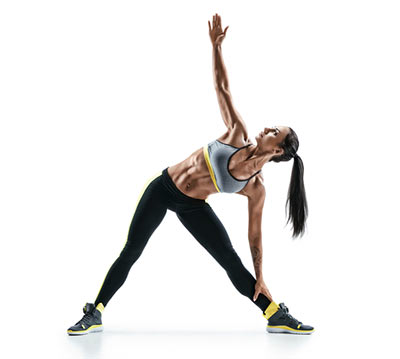
When we look at the hamstrings, for example, the use of end-ranges is clear. You can find the end range with something as simple as touching your toes without rounding over your back.
You’ll figure out where that position is easily, though it may change as you’re working through a set. This is also worth trying with a straddle stance, too, as this allows you to use different angles and may remove other factors that limit your range.
End-range is where you feel the stretch and where you need to spend time to become more comfortable in, and familiar with, the position. This same stretch, and finding where you’re restricted, is what you need to look for in all your mobility work. Even the dynamic stuff.
Control
One of the most important factors when working through a mobility exercise, or putting one together, is to focus on deliberate control. This is important because stretching is a neural process; it’s all about getting comfortable and building control over your muscles and joints in positions you’re not familiar with right now.
This is a good way to think about it … stretching and mobility work are effectively a process of familiarizing yourself with moving through and controlling specific ranges.
Research shows us there’s a huge difference between flexibility and effective mobility work. You can get more flexible (be able to move your joint through a longer range) without reducing your risk of injury or the health of the joint.
What really counts is the combined extension of range with additional strength and control. These are important in all the joints; it’s not specific to your hamstring, for example.
So, when you’re in the ranges you’re trying to develop, you need to move through them with purpose. It’s better to move slowly and deliberately through your end-range than it is to just swing yourself through it, that’s just warming up. While proper mobility work pushes you to build control.
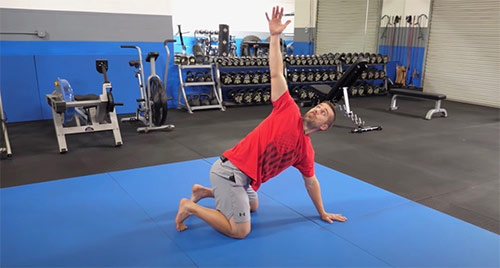
This could involve pausing, slow movement, and/or challenging yourself into positions that require the application of some strength. Things like hip rotations, focusing on keeping the knees as far apart from each other as possible, is a great example of this. It involves movement under control, with a deliberate control and strength portion.
This kind of focus in how you move, as well as where, is the best way to get the most from your mobility training in the shortest amount of time.
One great example of this kind of control is in the 90/90 hip switch. This is a form of rotation exercise that helps open up the hips and improve control, because this reduces the restriction on the hips and knees, while mobilizing the glutes, adductors, and TFL.
The focus on getting the knees as far apart from each other while shifting, and the focus on controlling the positions actively with the muscles, is what every mobility exercise should look like.
This is important because you’re not just looking to open up new range: you want to have active control over it! Think about this with all your mobility work and try to practice the same deliberate control over positions when you’re in those stretching ranges.

Movement
Movement is pretty self-explanatory … your mobility work is most effective when it’s dynamic and involves movement.
This is because both the active and passive structures in and around the muscles have evolved to deal with movement. The movement in both directions, stretching and shortening, is important to get the full function of the muscle along the whole range. This is important because the development of end-range freedom and control are dependent on control in both directions.
They’re designed to move, and the dynamism of good movement helps activate these tissues, doing things like improving the pairing of muscles on opposite sides of the joints.
The movement also helps you get into the end-ranges of a mobility exercise, as the momentum or weight of a movement can help move beyond the ranges you can achieve through willpower and voluntary control alone. This works the same as how, in a back squat, you’re going to be able to get into a deeper position with weight than just bodyweight.

For instance, when we perform a walking lunge we’re forcing ourselves to practice the movement that we’re trying to unlock with stretching. This is great because it helps us move through a longer movement, think about that end-range we discussed before, and the skill of controlling it.
It’s also important for how the hip and knee work together in this movement. You’ll find similar movement-based benefits in other exercises like the leg swing, walking toe touch, arm swings, and others.
The point of these movements is to improve the control of movement, the range, and even to improve the flow of blood to the muscles. They’re simple but effective exercises, and your warm-ups and mobility sessions need some movement!
Designing For Yourself
Humility: Finding Problems
The idea is a simple one. All you need to do is suit these specific principles to movements that are in the areas you’re weak in. This does rely on a humble approach to mobility however, you need to be able to identify problem areas and be willing to work through them from the ground up.
Personal mobility limitations are going to be found out through movement and practice, though there are some standards. Things like the ability to touch your toes with a flat back, how deep you can sit into a squat or lunge, and the ability to “superman” from a lying position are good examples.
None of this works if you’re misdiagnosing the issue: you need to look at areas where mobility is affecting your risk of injury or limiting your movement. If you keep getting injured in a particular joint, for example, then it’s going to be beneficial to practice effective mobility work in every direction on that joint.
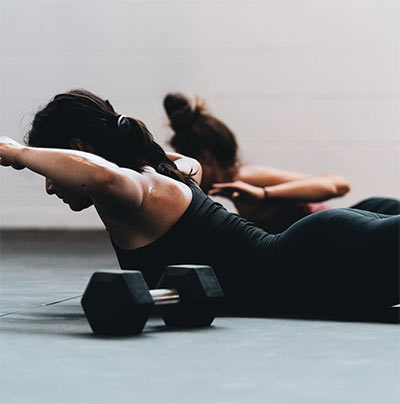
Patience: Addressing Problems
You also need to be patient in how you progress mobility work. You can’t just bash your head against the wall until it’s fixed. There’s a demand placed on the body by mobility work, just like other forms of exercise, and this carries a certain recovery demand.
The way you practice mobility should be considerate of the amount of exercise you’re doing. If you’re spending significant time working through mobility work, it all goes into the same “pot” of muscular and connective tissue work.
Speaking of which, it’s important to consider how much time you spend in mobility work and how you spread it out.
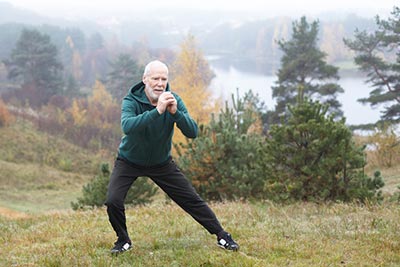
Regularity, Not Intensity
As mentioned above, mobility work is a neural change and that means that what matters isn’t how intensely you train it, but how often and regularly you train.
This is important because you need to imagine mobility more like a skill than a change in the length of the muscle itself. It’s better to practice mobility work twice a day for 5 minutes than for an hour once a week.
This is another way we manage the load and recovery effect of your mobility training. If you’re not cramming it all into one hour when you remember, you’re not going to see the same negative effects or soreness. You’re not brute-forcing your muscles!
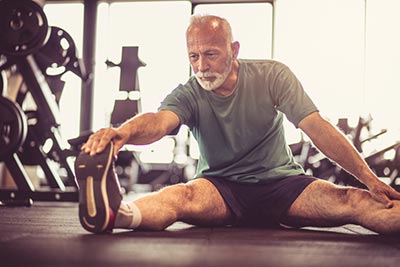
Final Thoughts
Properly managing your own mobility can be challenging, but it’s also rewarding to be in complete control of both your body and your routine.
It takes a little bit of forethought and some effort, but it’s also just a process of trial and error and iterating. It’s not going to be perfect right away, but as you get more experienced and push out on your own, you’re going to find what makes you feel and perform better.
These principles are where you start. From there it’s just about spending months and years practicing things to find what works best for you. We’re just glad that you’ve got the basic info you need to get started!





